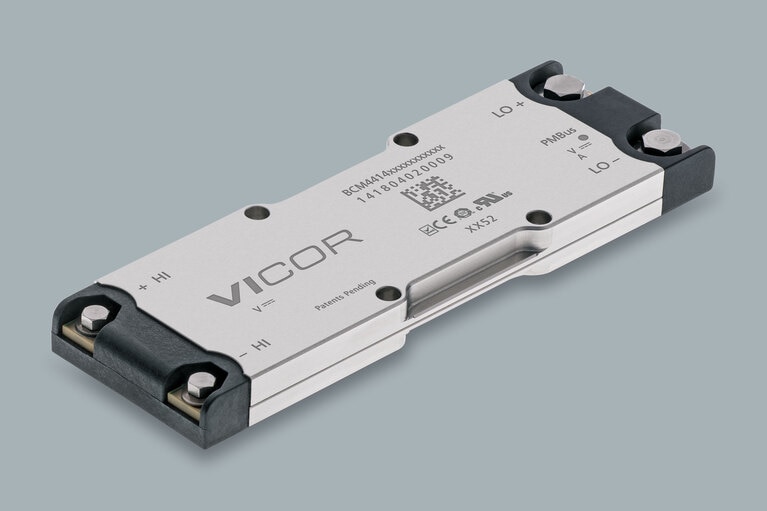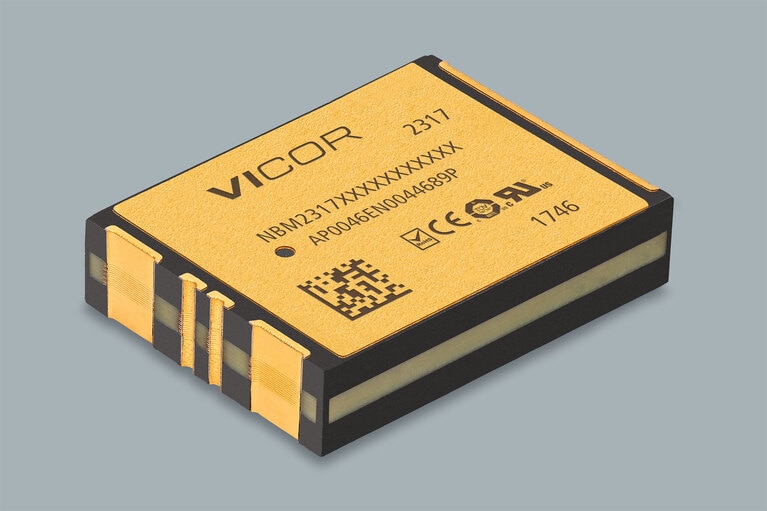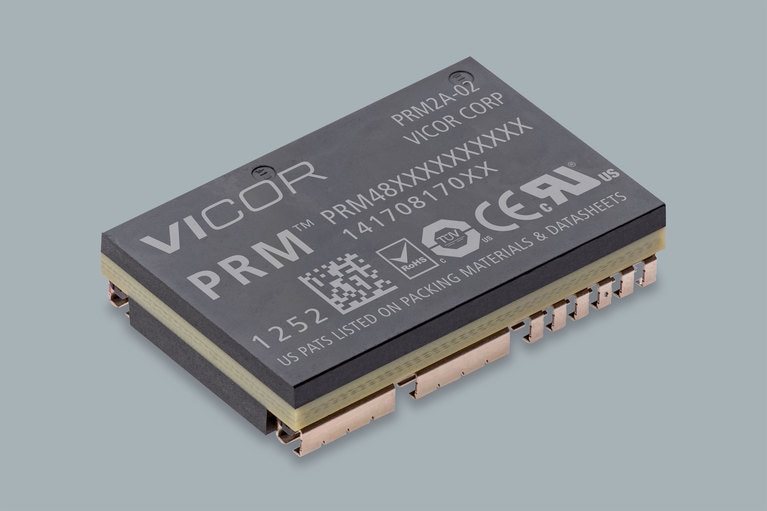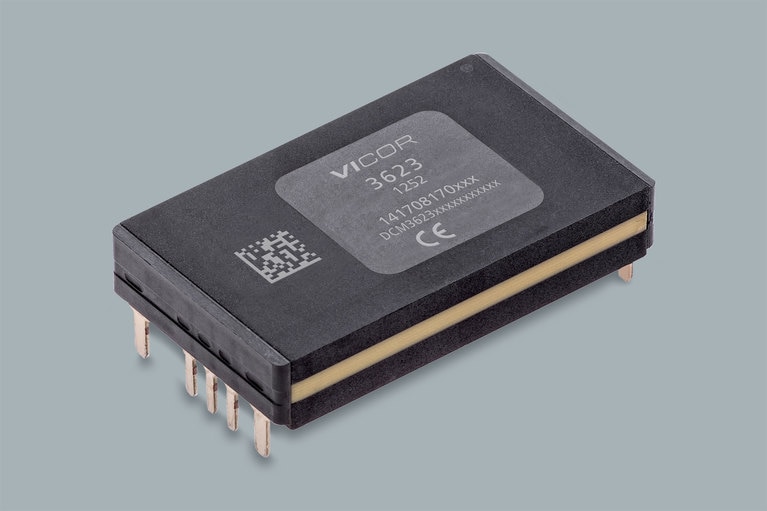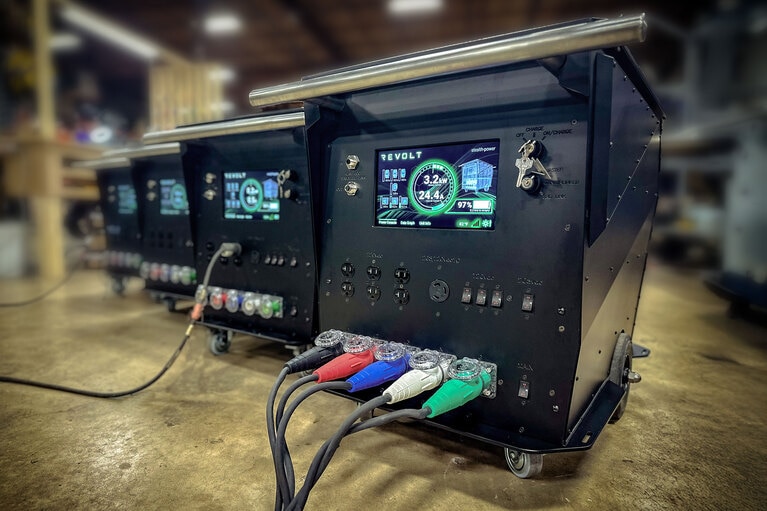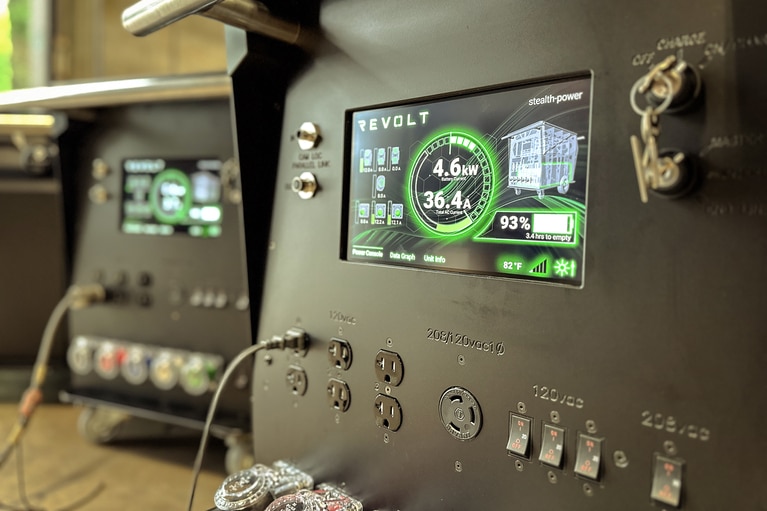
Build small, lighter power systems by eliminating bulk capacitance
Almost everything around us is touched at some point by robots. There are robotic applications utilized in agricultural harvesting, warehouse inventory movement, campus delivery and consumer delivery. These robots are fueled by batteries, making power conversion efficiency – along with size/weight – critical. Power conversion needs become more and more challenging as load capacity, visual recognition and user functionality requirements further increase within the robotic application. This video shares how Vicor power modules support a component-based power delivery network to power motor drives and demanding CPUs. Each power module is optimized for high-efficiency, density and overall performance. Go to Vicor robotics solutions
BCM4414 fixed ratio DC-DC converter
Input: 500 – 800V
Output: 31.3 – 50.0V
Current: Up to 35A
110.6 x 35.5 x 9.4mm
NBM2317 fixed ratio DC-DC converter
Input: 38.0 – 60.0
Output: 9.5 – 15.0
Power: 60A
22.8 x 17.3 x 7.4mm
PRM high-power Buck-Boost regulator
Input: 36 – 75V
Output: 20 – 55V
Power: Up to 600W
32.5 x 22.0 x 6.3mm
DCM3623 isolated regulated DC-DC converter
Input: 9 – 154V
Output: 3.3 – 53V
Power: Up to 320W
36.38 x 22.8 x 7.26mm
Build small, lighter power systems by eliminating bulk capacitance
Innovating power delivery networks
Every electronic piece of equipment or system has a power delivery network (PDN)
ReVolt’s carbon-free power platform electrifies movie sets
Film production sets are getting more electrically intensive, and using gensets can lead to engineering constraints and environmental problems
Hollywood goes clean energy: Vicor power modules power movie sets with ReVolt
ReVolt has developed a better way to power film sets and studio exteriors by providing clean, mobile, and always-on electricity
